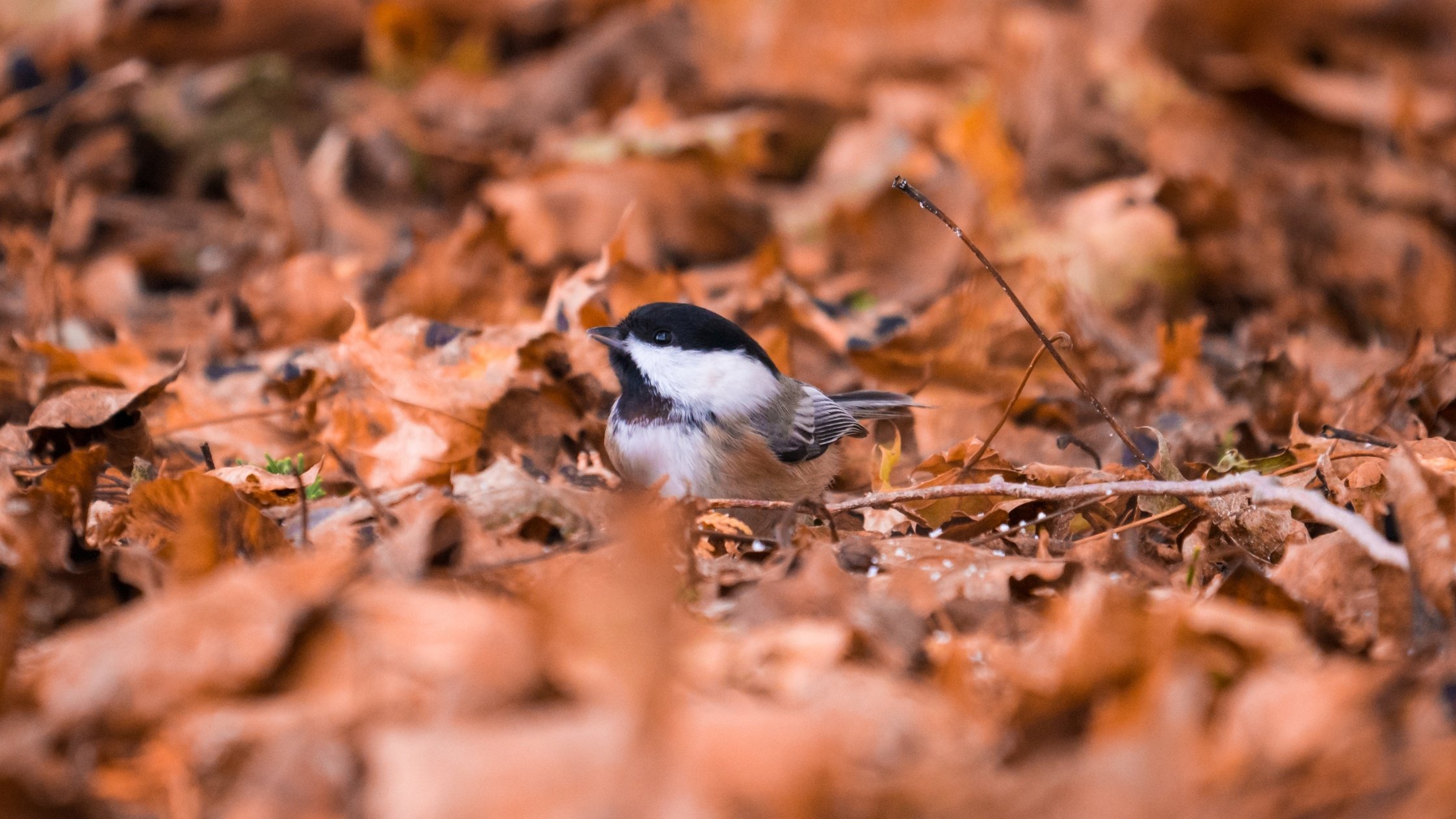As the leaves turn crimson and begin to fall, many homeowners feel the urge to tidy up their yards. But before you reach for the rake or fire up the leaf blower, consider this: leaving the leaves benefits both your yard and the wildlife that calls it home.
The National Wildlife Federation recognizes October as National Leave the Leaves Month to raise awareness about this very issue.
Here's why you might want to retire the rake this fall.

Leaf Litter: A Natural Habitat and Winter Refuge
Fallen leaves provide essential habitat for a variety of wildlife species. Leaf litter creates a protective blanket that insulates them from cold weather, offering shelter and a winter home for many creatures:
-
Insects: Many insects overwinter in leaf litter, including moths, butterflies, and bees. These insects are vital pollinators and a critical food source for birds and other animals. Some butterfly larvae, including monarchs, use the layer as a safe haven during their dormant phase.
-
Amphibians and Reptiles: Salamanders, frogs, and toads rely on leaf litter for shelter and moisture.
-
Small Mammals: Chipmunks, shrews, and mice use leaf litter for nesting and foraging.
Protecting Pollinators
Leaving the leaves allows caterpillars and other pollinators to overwinter safely in your yard. Many moth and butterfly species, depend on a leaf layer to protect their eggs or cocoons through the cold months. In the case of moths, an astonishing 94% of species rely on the leaf layer to complete their life cycle.
As for butterflies, the mourning cloak butterfly spends winter as an adult which is different from many butterfly species that migrate or overwinter in other life stages. Mourning cloak butterflies seek refuge from the cold in trees, logs, and piles of fallen leaves.
NWF tells the story of the mourning cloak and several other moth and butterfly species in their article, "How Fallen Leaves Support Moths and Butterflies."

Supporting Birds and Other Wildlife
Fallen leaves also help sustain bird populations by fostering insects that birds rely on for food. The vast majority of our backyard birds — some 96% — rely on butterfly and moth caterpillars as the primary food source for their babies during nesting season. If you remove all of your fallen leaves, there will be fewer of these insects in and around your yard and likely fewer birds, too.
Some songbirds, such as the Black-capped chickadee (Poecile atricapillus), search through the leaf litter for seeds, insects, and larvae to survive the winter. By keeping the leaves in your yard, you provide these birds with a valuable food source during the colder months when resources are scarce.
Creating Habitat for Fireflies
Leaving the leaves can also help save fireflies. These beloved insects are in decline, but you can make a difference by providing them with the habitat they need.
Fireflies spend most of their lives – sometimes up to two years – in their larval stage, hidden beneath fallen leaves. The leaf litter provides a moist, protective environment where they can feed on snails, worms, and other small creatures. It also acts as insulation, keeping them safe during the winter months.
When we rake up and remove leaves, we're not only taking away vital habitat, but we may also be unintentionally removing firefly larvae themselves. By leaving the leaves, you're helping to ensure that fireflies have a place to thrive.
Better for the Environment and Your Garden
Leaving the leaves also benefits the environment and your garden. According to the Environmental Protection Agency, leaves and other yard debris account for 35.4 million tons of waste per year in the U.S.! That is about 12.1% of all solid waste in the country.
The EPA also notes that yard waste generates methane gas in landfills, which pollutes the air we breathe, and can make its way into the ground, polluting our soil and water.
Simply leaving the fallen leaves in your yard helps the environment by:
-
Improving Soil Health: As leaves decompose, they add nutrients to the soil, like nitrogen, and improve its structure. This creates a richer environment for plants come spring.
-
Reducing Waste: Leaves and yard debris make up a significant portion of waste in landfills. Leaving the leaves reduces your environmental impact.
-
Conserving Water: Leaf litter helps to retain moisture in the soil, reducing the need for watering.
In addition to these benefits, mulched leaves can be used around trees, flower beds, and shrubs to act as a natural mulch. This saves you money and further reduces waste by eliminating the need to buy bagged mulch from the store. Your free, natural mulch helps your garden thrive by protecting plant roots, conserving moisture, and suppressing weeds.
As NWF Naturalist David Mizejewski explains, “Leaves form a natural mulch that helps suppress weeds and fertilizes the soil as it breaks down. Why spend money on mulch and fertilizer when you can make your own? Turning leaves into solid waste is, well, wasteful.”
Embrace the Fall, Leave the Leaves
Leaving the leaves this fall is a simple way to support wildlife, the environment, and your garden. But why stop there? Imagine a landscape with less lawn and more native plants, bursting with life and providing year-round food and shelter for local creatures. Reduce the time spent raking and bagging leaves, and create space for these beneficial plants to embrace a more natural, sustainable approach to lawn care.
The result? A beautiful and thriving ecosystem right in your own backyard.
